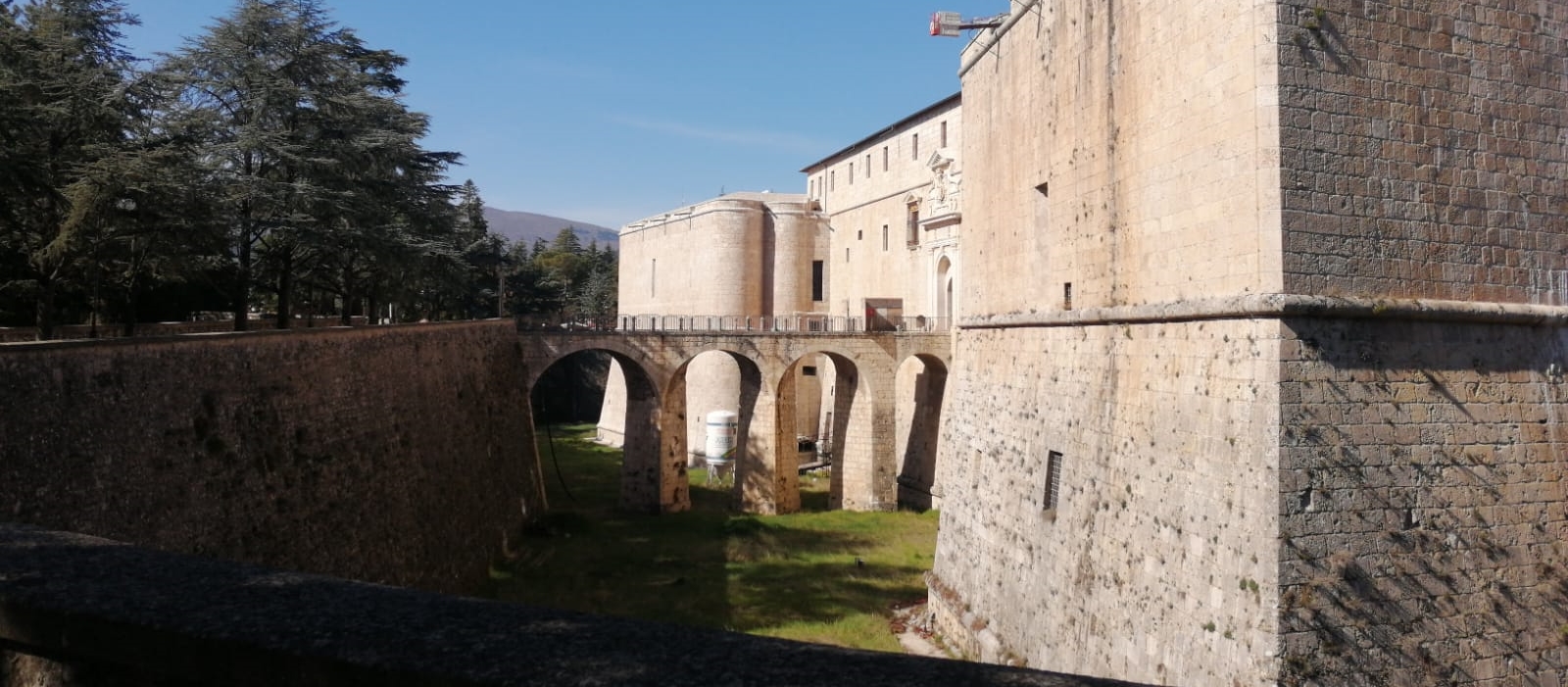
Spanish fortress, L'Aquila
It is a long-standing goal of non-equilibrium statistical mechanics to derive microscopic evolution equation from microscopic dynamics. A successful approach, which has been studied very intensively, is provided by hydrodynamic limits. Hydrodynamics is based on the observation that the motion of a large assembly of strongly interacting particles is constrained by local conservation laws. As a result, local equilibrium is established over an initial time span and followed by a much longer time window when the local equilibrium parameters are governed by the hydrodynamic evolution equations. Historically the best known examples are simple fluids for which hydrodynamics is synonymous with fluid dynamics. More recent applications span from liquid-gas phase transitions and hydrodynamic two-fluid models in quantum bosonic systems up to formation of super dense neutron stars, relativistic jets and Gamma ray bursts. Each mentioned topic is part of ongoing research.
Approximately five years ago a novel item was added to our list under the name of generalized hydrodynamics. Perhaps not as far reaching as other examples mentioned, generalized hydrodynamics relies on an amazing novel twist. The added topic is concerned with integrable systems for which the number of conserved fields is proportional to system size, in sharp contrast to the items listed above which have only a few conserved fields, as number, momentum, energy, plus broken symmetries. At first glance the mere idea of a hydrodynamic description of the time evolution of an integrable system sounds like an intrinsic contradiction. After all, establishing local equilibrium relies on chaotic dynamics which is just the opposite of integrability. But the large number of degrees of freedom helps.
The school is designed to provide an introduction to generalized hydrodynamics by means of an easily accessible example: the classical fluid of hard rods in one space dimension. Other examples that will be treated in the school include the Ball-Box cellular automata and the Toda lattice.
